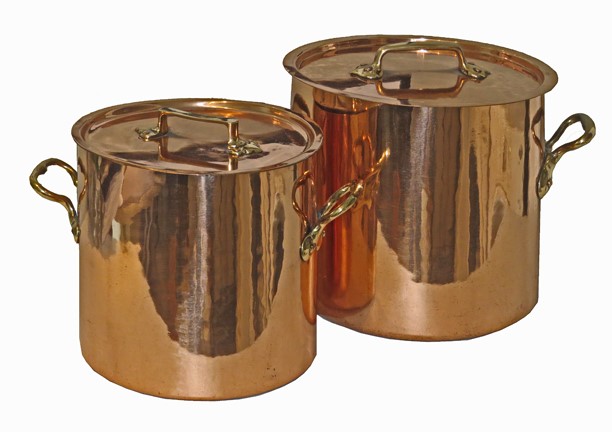
The science of copper is persuasive. It conducts heat evenly and quickly – getting the contents up to temperature 20 times faster than stainless. It doesn’t rust or corrode. And it is toxic to germs and bacteria. Historians at Colonial Williamsburg found that from the period of 1760 until 1810 it was common for cooks to load up a copper cauldron with ingredients and leave it to boil over a fire for the entire day.
It is also durable, as evidenced by the European practice of listing a collection of copper pots in a will as a legacy to the next generation. And, why not? 200 years ago, copper teapots cost the equivalent of one month’s wage for a working man. They were valuable and worth caring for. Sand for cleaning copper pots was imported to the U.K from France – showing the importance of keeping copper clean.
These days, the emphasis is on the capability of copper pots to create great food – from finely tempered chocolate to black bean soup. The value is in the functionality. And now, with Fall on the horizon, that gleam on the stove (or hanging over it) adds just the right amount of warmth.
Date/Circa: 1880
Origin: France
Size: 11″ High x 12″ Diameter
